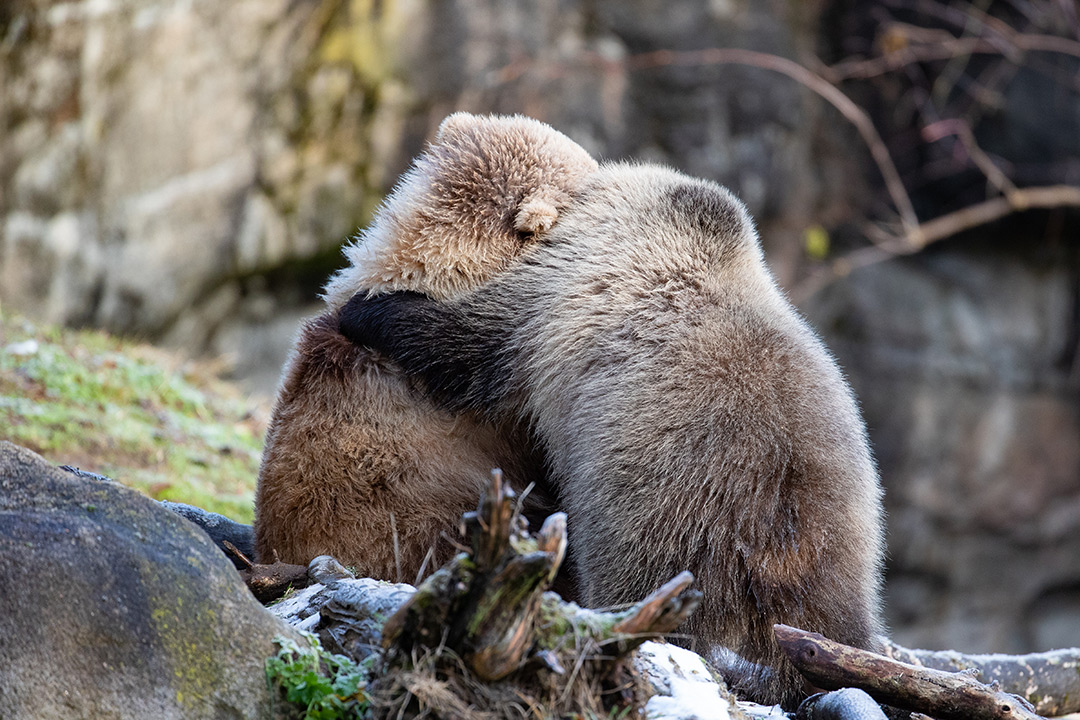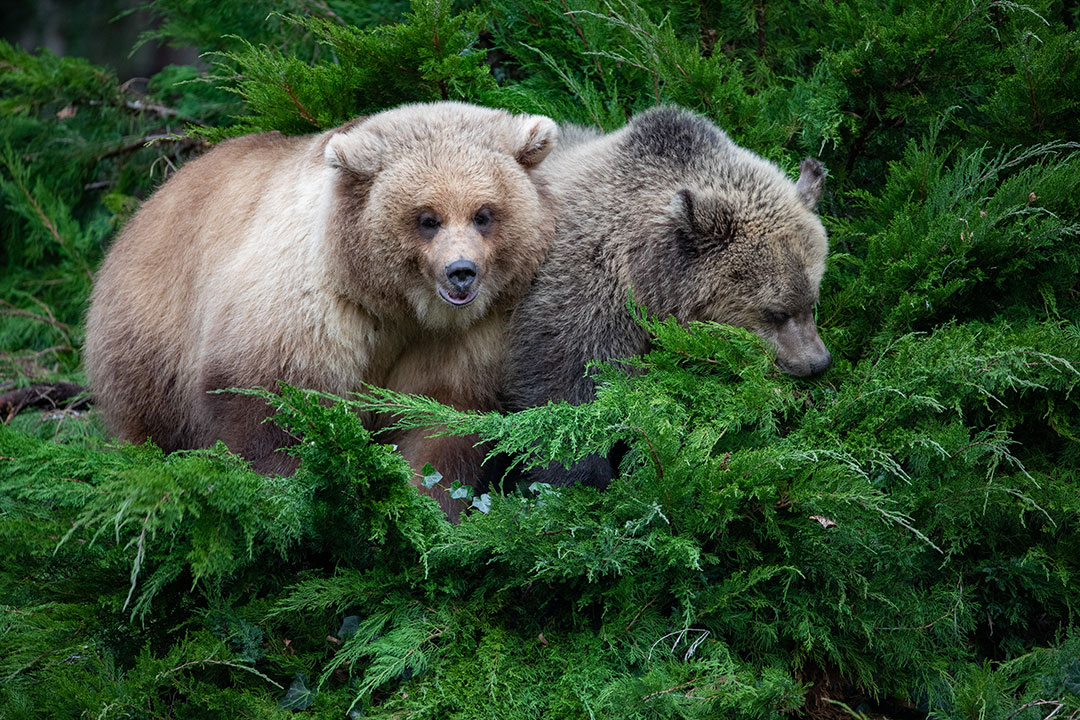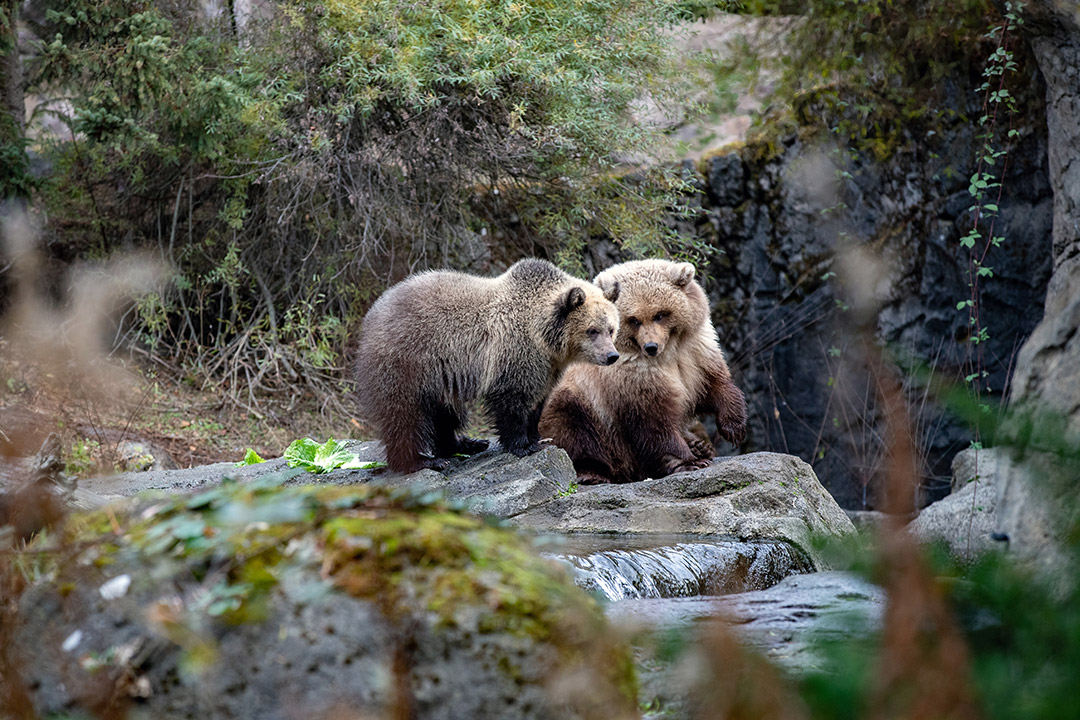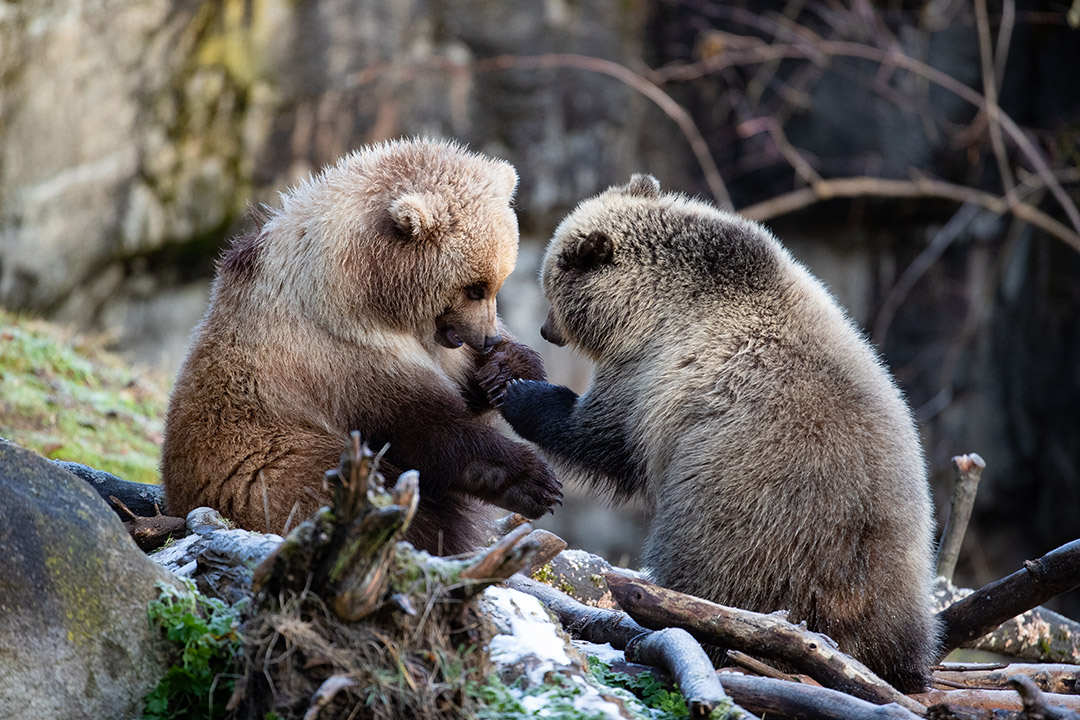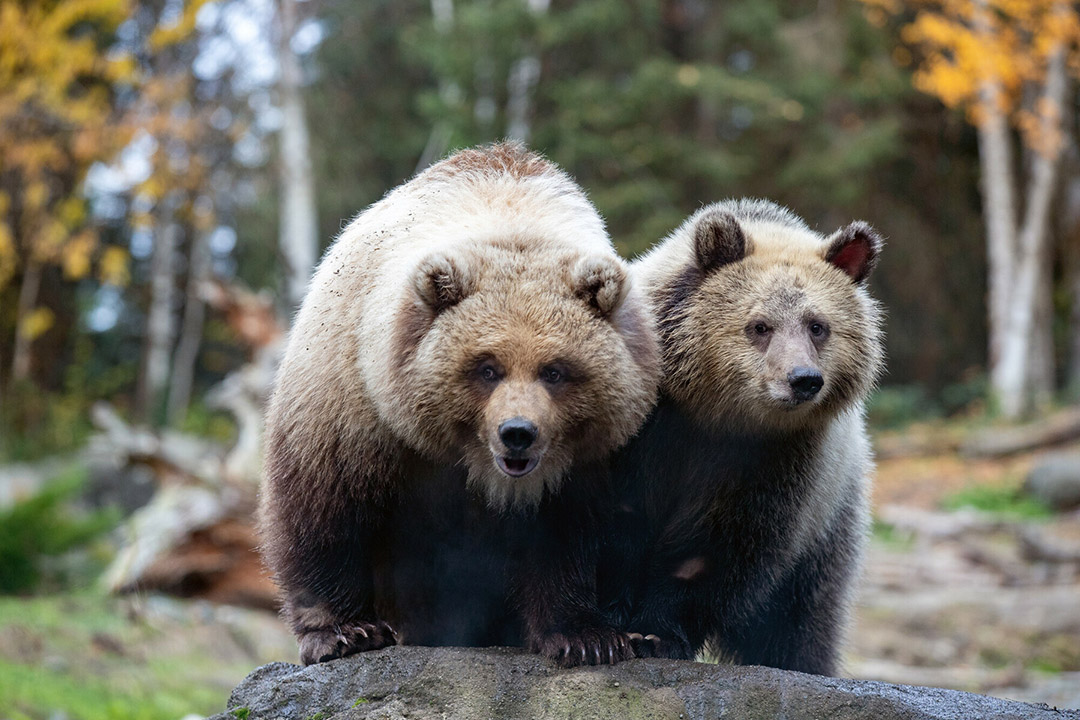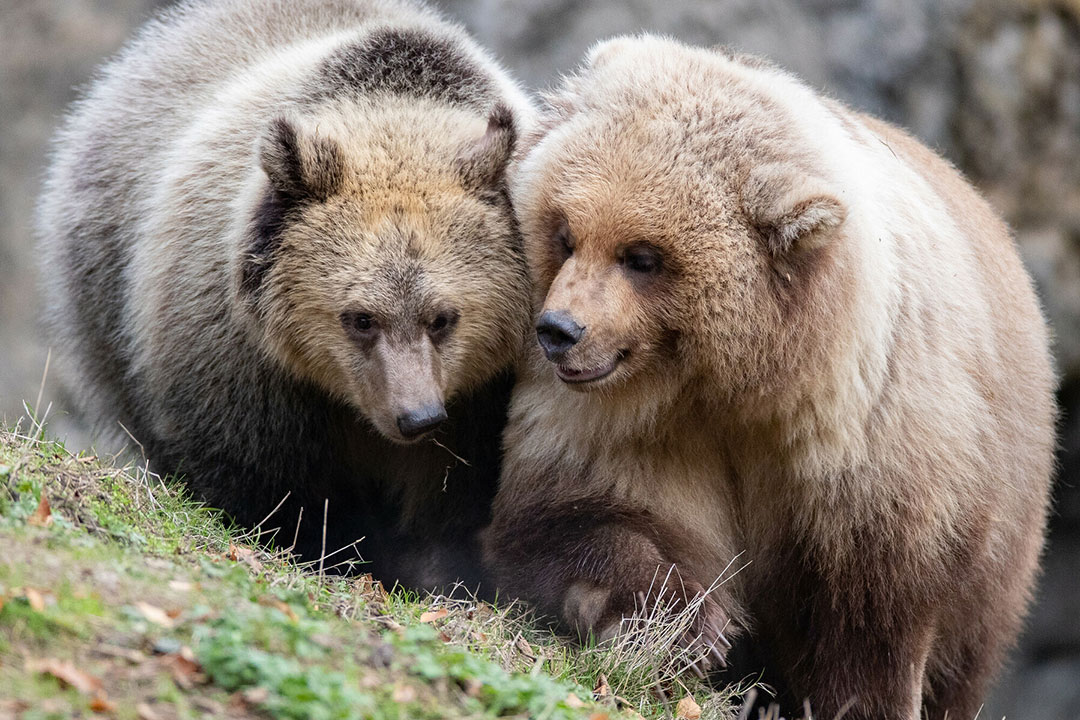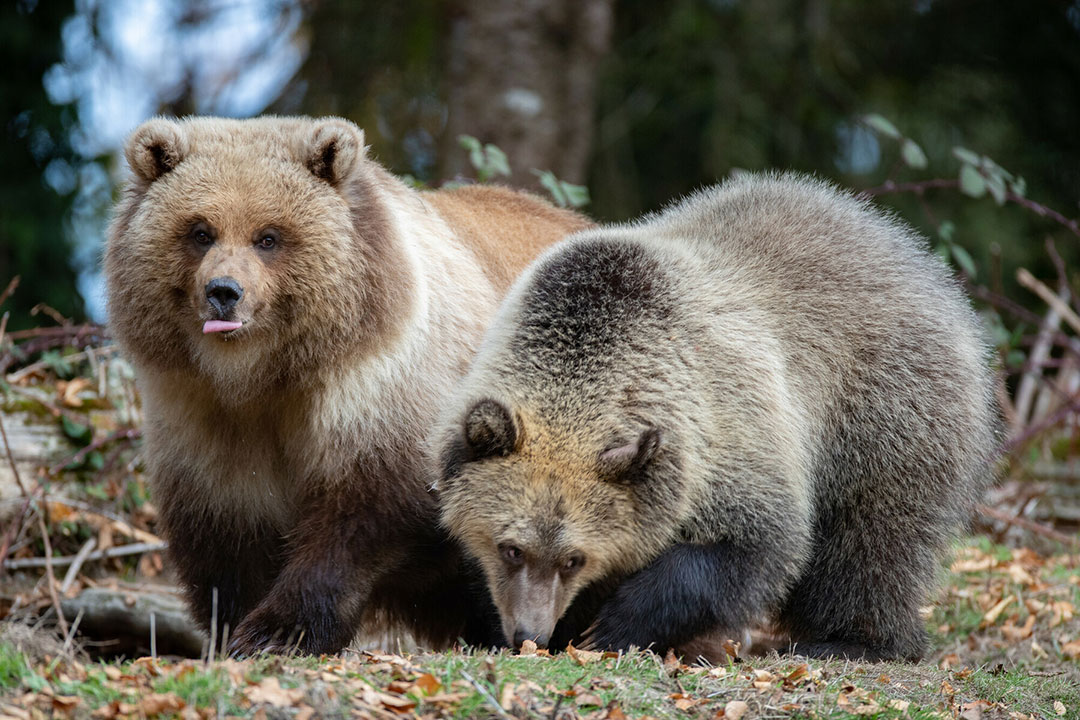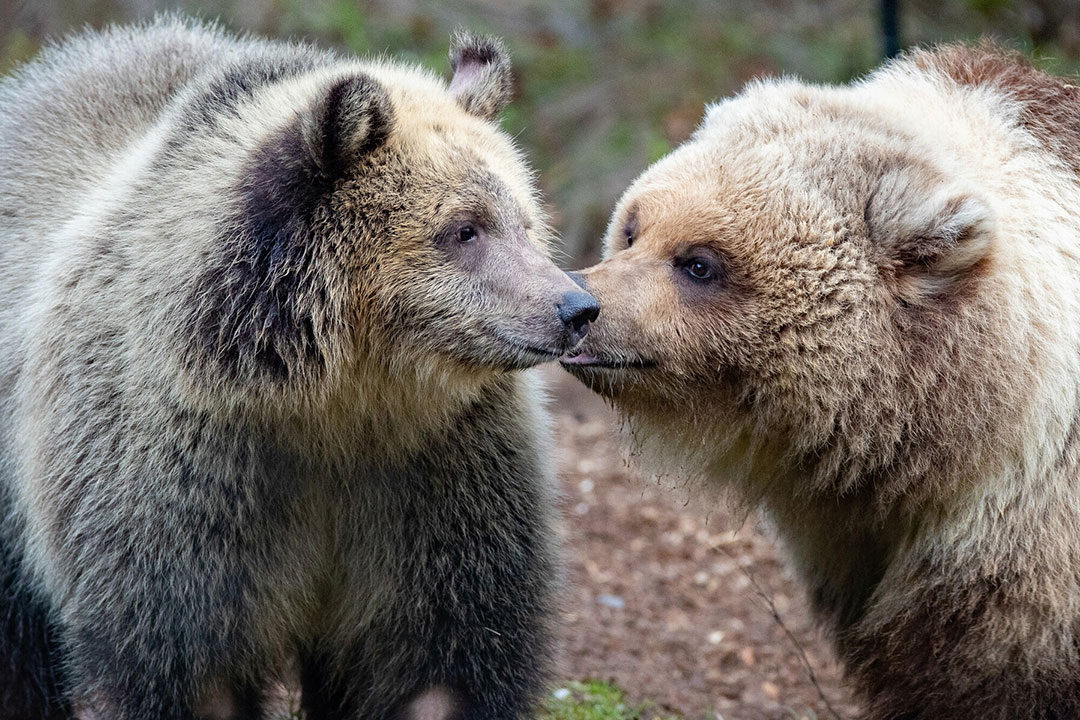
BROWN BEAR
Woodland Park Zoo is home to two young adult brown bears—both rescued as cubs
OUR BEARS
Meet Juniper
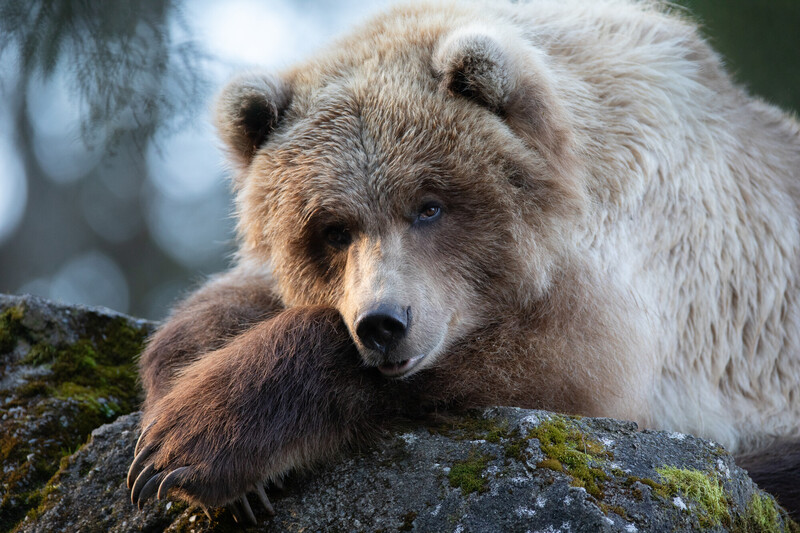
Juniper is an Alaskan coastal brown bear. Before coming to her safe new home at Woodland Park Zoo in 2022, Juniper was found roaming alone on an air force base near Anchorage. She was only months old at the time. Once the Alaska Department of Fish and Game confirmed that her mother was nowhere to be found and that she was too young to survive on her own, they moved forward to rescue her and arrangements were made to transport her here. She made her debut in our Living Northwest Trail habitat in the summer of 2022.
Juniper has a goofy personality and is the resident comedian of the Living Northwest Trail. She is commonly seen with a stick or root ball in her mouth; she has a big presence and is boisterous. She can be distinguished from Fern by her broader face, lighter fur, and larger size.
Meet Fern
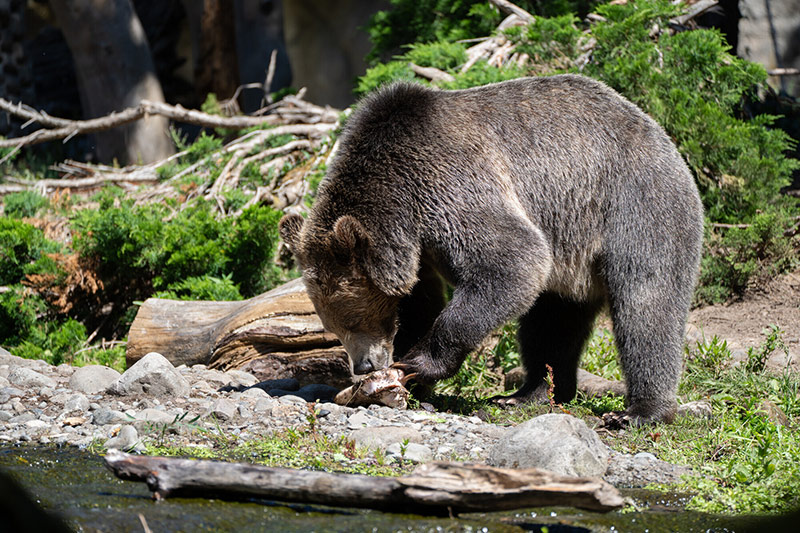
Grizzly bear Fern is the same age as Juniper. She was born in early 2022 in Montana, probably sometime in January.
The Montana Fish, Wildlife & Parks Department was forced to euthanize her mother that year, after multiple human-wildlife conflicts made the mother too acclimated to people. During their first two years, bear cubs learn everything about how to survive from their mother including how to hunt and forage for food. Being less than a year old, Fern was too young to survive on her own, so a rescue was needed, and Woodland Park Zoo was happy to offer her a home and an eager companion in Juniper!
Fern is a “deep thinker” and is very sure of herself. She can be distinguished from Juniper by her narrow snout, darker brown fur, and overall smaller size.
Learn more about Fern’s 2022 rescue and introduction to Juniper
If you’re lucky, you might spot these little ears yourself!
We are extremely excited to share these photos of our curious and energetic brown bear cubs, Juniper and Fern.
Learn More About Brown Bears
Juniper and Fern are both are brown bears and members of the same species (Ursus arctos), but Fern is an interior brown bear (also known as a “grizzly bear”) from the U.S. Rockies, while Juniper is an Alaskan coastal brown bear. Scientifically speaking, all grizzlies are brown bears, but not all brown bears are grizzlies. Brown bears are found in Europe, Asia, and North America; they are the world’s most widely distributed species of bear. Meanwhile, American black bears are an entirely separate species altogether (Ursus americanus), although some do have brown fur!
GRIZZLY BEAR RECOVERY
Bringing Them Back to the North Cascades
In April, 2024, the National Park Service and the U.S. Fish and Wildlife Service announced that they will reintroduce grizzly bears to the North Cascades of Washington! This momentous decision means that grizzlies will soon resume their vital role as ecological engineers and cultural icons, making the wild North Cascades Ecosystem even wilder. Learn more about how Woodland Park Zoo, as a member of the Friends of the North Cascades Grizzly Bear coalition, has advocated the efficient and effective restoration of grizzlies, and a careful planning process that will allow people and grizzlies to safely coexist in perpetuity.
Support reintroducing grizzly bears to the North Cascades

